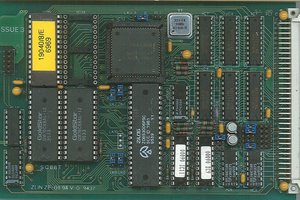I bought this out of curiosity, to have a working 65C816 system.
With hindsight, I realise that the main use old processors is to run old software, and few machines used this one. Notable exceptions are the Apple IIGS and the Acorn Communicator, both of which were quickly obsoleted. If you wished to clone either machine, you would also have to clone their ASIC chips.
As a processor, I don't like it. It effectively has two modes and you have to know which one is in use when disassembling. The bus cycle timing is tighter and more complex, which means that many circuits for the 65C02 might not work.
 Keith
Keith



 ziggurat29
ziggurat29

I bought this board, but the development system is awful, I analyses the rom and replaced the original content of the eprom by my own monitor... the usb serial fifo is extremely fast it"s a dream to upload or download a hex or srecord file.....
I also found a nasty bug in 6502 emulation mode
if you try:
LDA #$FF
STA $40
STA $41
LDY #$02
LDA or STA ($40),Y
RTS
it irremediably fail on the LDA or STA
a 6502 would wrap and access a byte in page 0 bank 0
but the 65c816 does not wrap and try to access page 0 bank 1
were there is no memory so it fails....
I checked the schematics of the board the bank register is loaded
in a latch at some phase of phi2
in emulation mode it should load '00' to wrap like a 6502
I'm working on a board to analyses this bug....
I will try to fix it but I have no idea if keeping the bank register at 0
has side effect in emulation mode....